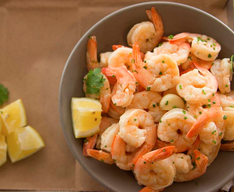On November 6th, Washington state will vote on Initiative 1631, a measure to curtail carbon emissions that drive ocean acidification and climate change
The initiative would put a fee on most fossil fuels purchased in the state and invest the proceeds to help people increase fuel efficiency, build clean energy supplies, and adapt to impacts. The price would start at $15 per metric ton of carbon emitted, which equates to roughly 13 cents per gallon of gas, or 15 cents for diesel. The price would rise at $2 per ton annually until the state is on track to hit its emission-reduction targets.
Fuel for fishing vessels will not be charged this fee. The initiative exempts marine fuels from the new carbon price, along with agricultural and aviation fuels.
However, vessel owners, vehicle owners, and seafood companies would be among groups qualified to apply for funding from the pooled carbon revenues — for example to increase fuel efficiency and reduce emissions through equipment retrofits.
Washington tribes and fishing community representatives negotiated successfully for a number of changes in the ballot measure last winter. They secured the provision to invest in fuel-efficiency in vessels and vehicles, along with other changes that allow resource-dependent communities to benefit from investments of carbon revenues. The aim of these investments is to help recipients afford to “become the solution.”
If the measure is approved, Washington would join dozens of nations and states worldwide that have enacted similar policies to price carbon emissions and invest the proceeds to increase energy efficiency and accelerate the transition to a cleaner economy.
Initiative 1631 has been endorsed by the Working Group on Seafood and Energy, an association representing fishermen, shellfish growers and fishery-dependent community leaders on energy and carbon policy.

Working Group members Terry Williams of Tulalip Tribes, Larry Soriano of Alaska Ship Supply, and Scott Coughlin; with GOH Deputy Director Julia Sanders
The Working Group actively opposed a 2016 initiative in Washington to price carbon without investing in solutions, saying that approach would be costly and ineffective.
The group believes that revenues raised to tackle carbon emissions should be used for that purpose. They contend that merely relying on higher fuel prices to do the job is a recipe for failure and causes unnecessary economic harm to businesses and people —like fishermen, among others —who must burn fuel to earn a living.
The senior advisor to the Working Group is Brad Warren, Executive Director of the National Fisheries Conservation Center and its Global Ocean Health program. The program focuses on helping fishery-dependent people confront the root causes and the marine consequences of carbon pollution and other waste streams. It was formed by GOH at the behest of seafood industry leaders who wanted a better understanding of climate change consequences and solutions, and a forum to voice their concerns.
Email Brad directly at brad@globaloceanhealth.org. Visit and like the Working Group on Facebook: https://www.facebook.com/seafoodandenergy/.

